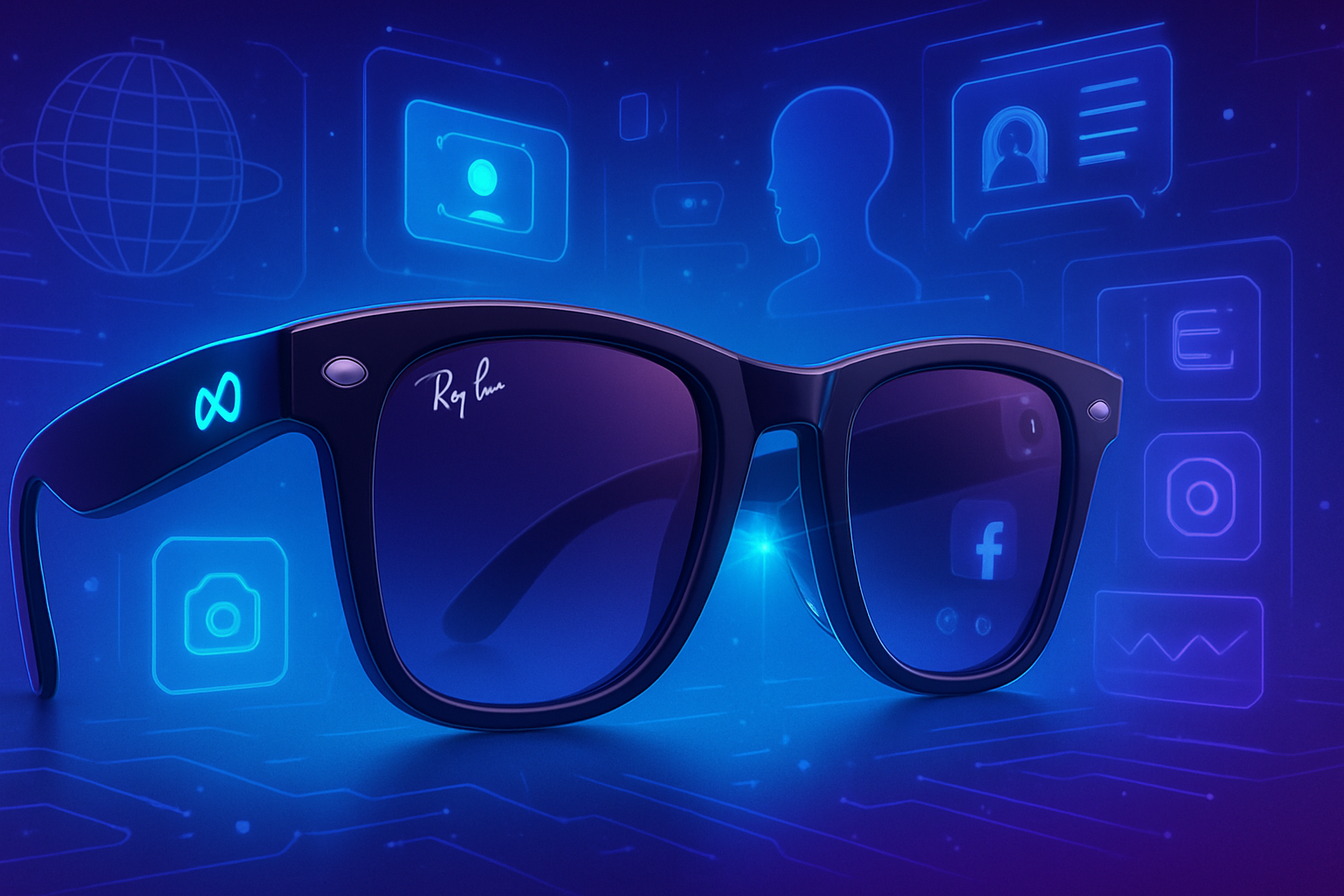The Ray-Ban Display, created by Meta, revolutionizes the perception of smart glasses. Innovative technology displays images directly on the lenses, merging fashion and functionality. The arrival of these glasses, both stylish and technological, raises questions about their *high price* and *user comfort*. Understanding these issues is essential to grasp the future of *smart accessories*.
Overview of the Ray-Ban Display
The Ray-Ban Display, recently unveiled by Meta, marks a significant advancement in the field of smart glasses. Equipped with an integrated screen projecting images onto the right lens, these glasses pave the way for a new era of digital interaction. The launch took place during the night of September 17-18, highlighting Meta’s commitment to technological innovation.
Features and specifications
The glasses feature a compact design, although they come with certain limitations. Weighing 70 grams, they are heavier than ordinary glasses, raising concerns about long-term comfort. Moreover, the arms of the glasses are particularly thick, which may affect their visual appeal to consumers.
Price and availability
The commercial launch of the Ray-Ban Display will begin in the United States at the end of September for a price of $800, equivalent to approximately €750 after taxes. The arrival of this gadget in France remains uncertain, and this situation could influence its overall reception. The price range is comparable to that of high-end smartphones, thus limiting accessibility for some consumers.
Context and competition
This launch occurs at a time when the market for smart glasses is experiencing a resurgence of interest. The company EssilorLuxottica recently acquired Pulse Audition, an innovative French startup in this sector, escalating the competition. Meta’s strategy, supported by its colossal financial resources, gives it a distinct advantage in establishing these glasses in the market.
Critiques and expectations
The Ray-Ban Display is not without criticism. Potential users are questioning their functionality in relation to their high price. Opinions vary regarding the necessity of an integrated screen in glasses, with some considering it superfluous. Ergonomics and performance tests will be essential to determine the viability of this product.
Future perspectives
The Ray-Ban Display could open up new avenues for augmented reality devices. Integrating technology into familiar formats, such as glasses, could transform how users interact with their environment. The market eagerly awaits the impact of these innovations on technology consumption.
More information about this announcement can be found in related articles, such as the discovery of the glasses and Meta’s results. These developments could mark a turning point in the acceptance of smart glasses.
Frequently asked questions about the Ray-Ban Display
What are the main features of the Ray-Ban Display glasses?
The Ray-Ban Display is distinguished by its integrated screen projected onto the right lens, allowing users to see images and information directly in front of them. They also combine a classic Ray-Ban glasses design with modern technology.
What is the retail price of the Ray-Ban Display glasses?
The Ray-Ban Display will be on sale in the United States for $800, approximately €750 once VAT is included.
When will the Ray-Ban Display glasses be available in France?
Currently, the availability date of the Ray-Ban Display in France is still uncertain, and no official announcement has been made regarding their market launch in France.
What is the weight of the Ray-Ban Display glasses compared to ordinary glasses?
The Ray-Ban Display glasses weigh about 70 grams, which is twice as heavy as a pair of regular glasses, potentially influencing comfort of use.
Are the Ray-Ban Display compatible with other devices or applications?
While specific details on compatibility are not yet available, it is expected that the smart glasses will work in synergy with Meta applications such as Facebook, WhatsApp, and Instagram.
What are the potential drawbacks of the Ray-Ban Display glasses?
The main drawbacks of the Ray-Ban Display glasses include their high price, increased weight, and design with thick arms which can affect aesthetics for some users.
Can the Ray-Ban Display glasses be used to watch videos?
The glasses are designed to project information, but it has not yet been confirmed whether they will support smooth video viewing like a conventional screen.
How are the Ray-Ban Display glasses charged?
Details about the charging system have not yet been fully disclosed, but it is likely they use a standard charging port or a wireless method.





